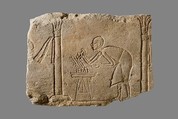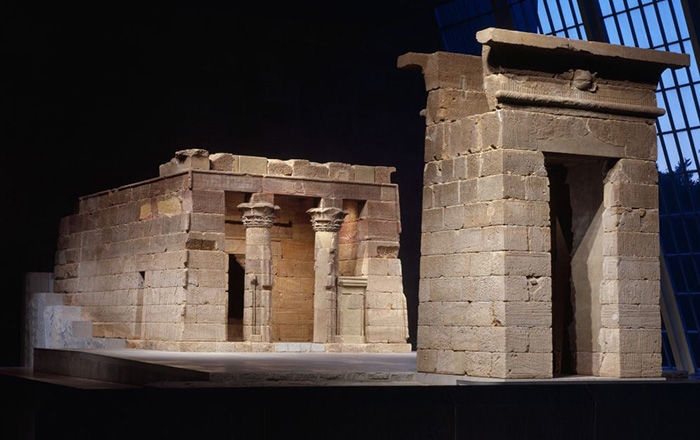Relief with palace attendant
New Kingdom, Amarna Period
Narrow wooden palm columns provide the clue that a room of a palace or house structure is depicted on this block, since the stone temples employed in the main thick stone papyrus bundle columns. Many scenes of palaces are depicted in relief from royal buildings and in officials’ tombs, as the 'palace' served as a point of departure or station on the king's regularly depicted journey to the temple. In addition, there are official service-houses for central bureaucrats that are sometimes seen in association with royal buildings.
An attendant stands over what seems to be a large flaming brazier on an openwork stand, and drops additional coals on it from a small dish, causing the flames shoot up high. Scenes like this evoking the busy activity of attendants, or ephemeral phenomena like dancing fire, create a lively hubbub surrounding the intense focus of the royal family on the Aten.
The relief is sandstone, which, while not unknown at Amarna, is the main material in Akhenaten's Karnak constructions. That and the more angular treatment of the attendant's head suggest the relief comes from Karnak.
This image cannot be enlarged, viewed at full screen, or downloaded.

